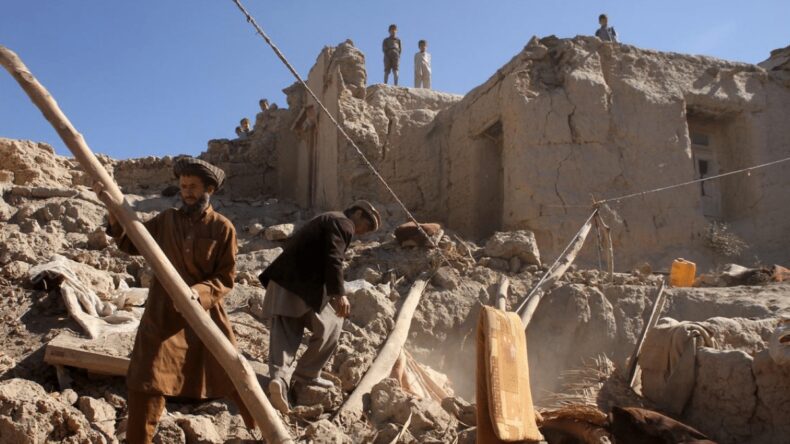At least 13 people have lost their lives, and more than 90 others have been injured in Afghanistan and Pakistan after a powerful 6.5 magnitude earthquake struck on Tuesday.

The earthquake was felt across a vast area affecting over 285 million people in Pakistan, India, Uzbekistan, Tajikistan, Kazakhstan, Kyrgyzstan, Afghanistan, and Turkmenistan.
The epicenter was located 40 kilometers southeast of Jurm hamlet in the Hindu Kush mountains, in the sparsely inhabited Badakhshan province of northeastern Afghanistan. According to the US Geological Survey, the earthquake had a considerable depth of 187km.

In Pakistan’s Khyber Pakhtunkhwa province, at least nine people have been confirmed dead, and 44 others have been injured. Senior provincial official Abdul Basit revealed that at least 19 houses were damaged. Hospitals in northern Khyber Pakhtunkhwa province were put on high alert overnight to cope with the increasing number of patients.

Similarly, in Afghanistan, at least four people lost their lives, and 50 others have been injured, with houses and buildings also being damaged. The disaster mitigation ministry of Afghanistan’s Shafiullah Rahimi reported that two fatalities had occurred in the province of Laghman in the country’s east.
Pakistan Prime Minister orders disaster response as earthquake felt across South Asia

Pakistan Prime Minister Shehbaz Sharif has directed disaster management agencies to take immediate action in helping those affected by the recent earthquake.
India, Uzbekistan, Tajikistan, Kazakhstan, Kyrgyzstan, Afghanistan, and Turkmenistan were among the countries that felt the shocks. The BBC, citing the European-Mediterranean Seismological Centre, reported that the earthquake’s impact was felt over a 1,000-km area.

The region affected is known for its high seismic activity as it lies at the juncture of the Eurasian and Indian tectonic plates.In the past, Afghanistan has witnessed several earthquakes, with the deadliest one being a 5.9-magnitude quake that claimed over 1,000 lives in Paktika province.
This recent earthquake serves as a reminder of the vulnerability of the region and the need for appropriate disaster management measures to be taken to prevent loss of lives and property.
Seismically active South Asia at risk of frequent earthquakes
South Asia is known for its seismically active geography due to the Indian plate pushing north into the Eurasian plate. Over 1,000 people were murdered by a 6.1-magnitude earthquake in eastern Afghanistan last year, while at least 73,000 people were killed by a 7.6-magnitude earthquake in northern Pakistan in 2005.

This quake serves as a reminder that South Asia remains at risk of deadly earthquakes, as several cities in the region lack appropriate infrastructure to cope with the aftermath of a quake. The governments of these countries must take steps to strengthen their infrastructure and prepare themselves for future disasters.
Earthquake in NCR
An earthquake with a magnitude of 6.6 hit the Delhi-NCR region on Tuesday night at around 10:22 pm. The epicenter was in the Hindu Kush region of Afghanistan, and no loss of life or property damage has been reported.

An earthquake with a magnitude of 6.6 hit the Delhi-NCR region on Tuesday night at around 10:22 pm. The epicenter was in the Hindu Kush region of Afghanistan, and no loss of life or property damage has been reported.
The event has caused a sense of concern amongst locals, but experts are currently monitoring the situation closely to ensure that no further damage occurs.
Why the recent earthquake in Delhi-NCR, North India was felt for a longer duration
The recent quake in Delhi-NCR and north India was felt for a longer duration due to the depth of the fault being over 150 km, according to a senior seismologist. The impact of the quake was felt in two stages, with people first feeling the primary waves followed by the secondary waves.
This seismic event serves as a reminder of the need for appropriate disaster management measures in the region.












